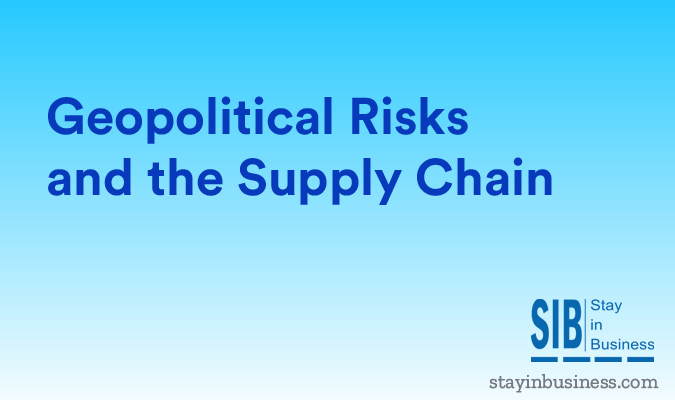Geopolitical Risks and the Supply Chain

More and more companies with global supply chains are having to deal with the impact of geopolitical risks through the use of integrated data.
Trade relations between the USA and China, the two most dominant forces in the global business arena, have been steadily deteriorating. On the other hand, rising tensions with Iran threaten nearly half the world’s oil supply that flows through the Strait of Hormuz. Cross border migration and hostilities in Latin American and Middle Eastern countries are on the rise owing to inefficient governance.
Organizations around the world are obliged to squarely address rising geopolitical risks to their global business operations due to the impact of economic, ideological and military factors – factors that today exert a far stronger influence on international trade than they ever have in the last decade and a half.
The use of technology has become imperative in minimizing the exposure of supply chains to geopolitical risks while simultaneously exploring new business opportunities. As business revenue slackens and commercial prospects become more erratic and unpredictable, industry experts can’t ignore the impact of geopolitical risks while making market forecasts.
Many companies are already feeling its repercussions. For instance, Fedex, the courier delivery service, recently had to file a complaint against the U.S. Department of Commerce as they had been penalized for delivering goods to Huawei, the Chinese technology company. Export control policies prevent American firms from supplying specific types of technology to Huawei. But the rules are replete with ambiguities, implying rising expenses for Fedex to stay compliant. In another statement, the company announced that its Express unit that handles air cargo and next day shipping among other operations and generates nearly half of the company’s revenue would be closing down business with Amazon.
Shortly afterwards, President Trump temporarily withdrew the ban that prevented American companies from trading with Huawei.
Another casualty of growing tensions between the USA and China is the changing operational landscape across the transpacific trade lane that connects Asia and the Americas. The situation is further exacerbated by the free trade agreement between Asia Pacific countries, Mexico and Canada that the USA refused to be a part of. Exports from Vietnam, South Korea and Taiwan to the USA are growing at alarming rates as the three countries take advantage of China’s rapidly decreasing exports to the USA.
The USA might also levy taxes on the European Union, Canada, Mexico and even Vietnam. Global supply chains have to stay prepared for these and other geopolitical risks.
Supply Chain Trends in Response to Geopolitical Risks
- No changes to operating models and growth strategies
- Changes to supply chain and sourcing strategies
- Moving growth strategies to alternate territories
- Procrastinating capital expenditure
- Shifting production and operations to other regions
- Delaying foreign direct investment
It is interesting to note that many firms haven’t implemented changes despite being acutely aware of the risks their operations are exposed to. Although there isn’t much clarity on the reasons for this, it would be fair to cite insufficient intelligence, a lack of understanding or relevant data as possible reasons.
Many organizations are responding to this scenario by digging into the large data volumes at their disposal. Products are available that interface between an organization’s business processes and its supply chain vendors. Operational constraints can be identified through insightful analytics that facilitate data driven decision making.
Firms can now effortlessly calculate expenditure, transit times, and service performance across their supply chain channels. Companies can meet the rising demands and respond to risks across their supply chains through instant information sharing and automated workflow management.
The role of technology in working around geopolitical risks can’t be stressed enough. Rapid responses to global supply chain risks can be leveraged through an orchestrated effort that brings together people, systems, information, processes and capital.
Geopolitical risks shouldn’t be a reason for falling back on customer expectations. Data driven platforms that aid in decision making can improve supply chain performance by optimizing inventory levels, shipment lead times, supplier availability, and transportation capacities. Global networks can adapt in real time or even plan their changes well in advance based on forecast events, thereby drawing a healthy balance between expenditure, service and business opportunities.
Categories: Business Continuity, Uncategorized
